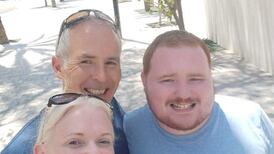Leaving Cert: Art History: Leaving Cert art history is mainly taken by girls, who make up two-thirds of student numbers.
Yet at Dunshaughlin Community College, Co Meath, art is not considered a girly subject, and boys make up 70 per cent of the class.
TUI spokeswoman Ms Helen Comiskey, a teacher at the school, declared both ordinary and higher papers "very fair" and the students "very pleased".
Ms Jane Campbell, St Joseph's, Navan, an ASTI spokeswoman, agreed.
"In the past there were some twists in the questions, like asking about Warhol, which students knew about, and sticking in Liechtenstein, who students knew nothing about, as a comparison. There was none of that this year."
She added: "Language was more honest. For example, a question in the past would be: 'Describe the work of any futuristic artist with particular reference to the stylistic devices used to express the futuristic perception of modern life.' The average student would not have a clue."
This year the phrasing on a similar question in the higher paper was: "Define the visual characteristics of one of the following art movements."
The open question also had a big list to pick from.
The ordinary paper was also friendly, with generous and open questions.
The questions were expressed in bullet points, leading the student through the answer.
From the teachers' point of view, all the main topics were covered.
There were three sections - section one was art in Ireland from the prehistoric to the present.
Section two was European art from the 10th to the 21st century.
And general appreciation covered everything from design of objects, film, set and costume design - the whole visual feast.
At the higher level there was also a large enough number of questions to cover any of the art periods covered in class.
This meant if you missed out on medieval religious art you could be covered with your Renaissance or 20th century.
This year's honours exam even featured the "green bag", an object that combines function with design.
One question invited students to design a sculpture to fit a space in a public park. Why do people want public sculpture? What would your considerations be in terms of cost and location?
A question about the Spire in O'Connell Street asked students to address its visual and sculptural qualities in the environment.
There were two questions on a museum visit - the first more open and the second about the Chester Beatty Library. It asked students to explain why the library won the award of European Museum of the Year.
Top students would have had ample chance to write an essay displaying all their knowledge and analytical ability.










